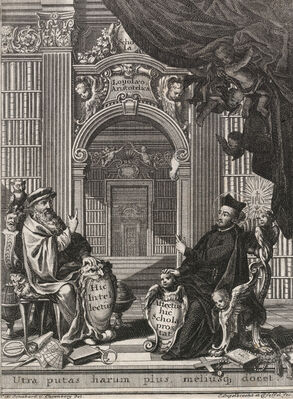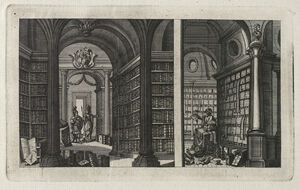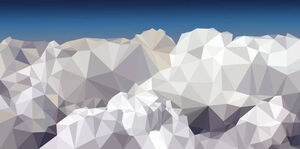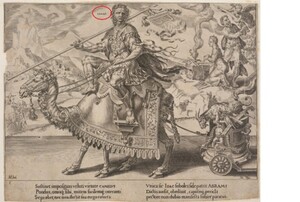By Sebastian Haller
Augmented reality is a deceptive term. Because its definition seems to be straightforward – it openly implies the augmentation of reality –, it somehow obscures its intrinsic features. This is due to a couple of reasons. Since its technological as well as discursive introduction in the early 1990s, augmented reality devices are commonly understood as imaging technologies that depict ‘reality’ and, at the same time, enrich this ‘reality’ by means of virtual information. This concept of AR was coined by its most prominent actors as the ‘reality-virtuality continuum’ (Milgram/Takemura/Utsumi/Kishino 1994, Azuma 1997). Surprisingly, even after twenty years after its introduction, the paradigm of the ‘continuum’ is still considered to be the central aspect of AR technologies; this is surprising, not because of its longevity – twenty years is an incredibly long time-span in the context of digital technologies –, but because of its intentional negation of possibly the only real consensus there is in the everyday as well as scientific discussion about mediated objects: That mediated content/media content is not reality – even though, one must add, every media requires a real material carrier. Neither media theorist nor ‘ordinary’ users of an imaging device, such as a digital camera, believe that any mediatised/mediated entity, i.e. something that is represented by the means of something else, is reality. But still, the discourse of augmented reality is still relying on this deception of ‘reality’ as its sine qua non. Unquestionably, contemporary digital devices offer a high degree of- to borrow from literary theory- of verisimilitude, or, with Roland Barthes, they convey an enhanced effet de reel
But if the conviction of ‘reality’ in AR is highly problematic, what further characteristic is intrinsic to AR? What happens if you detach the notion of ‘reality’, its sine qua non as implied by the Milgram and others, from AR? Does AR have any other characteristic features if you refute the notion of ‘reality’? If so, are those features strong enough to understand AR as a distinct imaging technology? Basically, this paper argues that, on the one hand, the supremacy of ‘reality’ can be abolished and, on the other hand, AR can still be defined as a distinct imaging technology. This objective will be achieved by focusing on the construction and augmentation of space. Instead of understanding the devices of AR as augmented reality, this paper will argue that according imaging technologies are (a) constructing a (unified) image space that reacts in real-time to a real physical environment and (b) they are augmenting this space with virtual information – i.e. AR devices establish an augmented space instead of an augmented reality. This augmented space necessitates four essential features: (1) a material carrier or medium, (2) a form that is perceptible through the medium that conveys a space, (3) the augmentation/distortion of this space through (whatever) information that is set outside the logic of the unified, homogenous space and (4) a spectator who (not only perceives) but decodes this complex relation between 1, 2, and 3 in the process of cognition.
Furthermore, I suggest that ‘augmented space’ is not just confined to the means of digital AR devices. Instead, augmented space is a visual phenomenon that emerges in all possible imaging technologies that are able to construct space and, at the same time, break with this (unified) space through additional (virtual) information. This means, augmented space is considered to be a phenomenon of visual culture that is not confined to new media technologies, but also to ‘old’ media, such as ‘traditional’ (painting, drawing, graphics etc.) and reproductive media (photography etc.). Paradoxically, this information (1) counteracts the space and, at the same time, (2) is related to information inside the space. Evidently, there are profound differences in the augmentation of space in regard of its technologies; e.g., digital devices that are able to react in real-time, augmentation of space is time-based and reacts ‘live’ to its environment and the movement of the user (see fig. 1). On the other hand, augmented space in ‘traditional’ technologies of image production, for instance baroque graphics, is a static phenomenon. Such graphics make use of an ‘augmented space’ to offer information that cannot (or hardly) be depicted ‘iconically’ (see fig. 2 and fig. 3).
Links:
Holy kinship in the temple on the GSSG
Bibliography:
Avram, Horea. 2013. “Augmented Reality.” In Theorizing Visual Studies: Writing Through the Discipline, edited by James Elkins, 88-92. New York: Routledge.
Azuma, Ronald T. 1997. “A Survey of Augmented Reality.” In Presence: Teleoperators and Virtual Environments 6, Vol. 4 (August), 355-385.
Barba, Evan. 2014. “Toward a Language of Mixed Reality in the Continuity Style.” In Convergence: The International Journal of Research into New Media Technologies 1, Vol. 20 (February), 41-54.
Barthes, Roland. 1989. The Rustle of Language. Berkeley: University of California Press.
Bimber, Oliver and Ramesh Raskar. 2005. Spatial Augmented Reality: Merging Real and Virtual Worlds. Natick: A. K. Peters.
Bolter, Jay, Blair MacIntyre, Maribeth Gandy, and Petra Schweitzer. 2006. "New Media and Permanent Crisis of Aura." Convergence 1, Vol. 12, 21-39.[i]
Bourdieu, Pierre. 1990. Photography, A Middle-brow Art.Stanford: Stanford University Press.
Engberg, Maria and Jay David Bolter. 2014. “Cultural Expression in Augmented and Mixed Reality.”In Convergence: the International Journal of Research into New Media Technologies 1, Vol. 1, 3-9.
Fahle, Oliver. 2006. “Augmented Reality - Das partizipierende Auge.” In Das Spiel mit dem Medium: Partizipation, Immersion, Interaktion, edited by Britta Neitzel and Rolf F. Nohr, 91-103. Marburg: Schüren.
Fuchs, H. and J. Ackerman. 1999. “Displays for augmented reality: Historical re-marks and future prospects." In Mixed Reality. Merging Real and Virtual Worlds, edited by Y. Ohta and H. Tamura, 31-40. Ohmsha(Tokyo): Springer Verlag(Berlin).
Furht, Borko. 2011. Handbook of Augmented Reality. New York: Springer Science+Business Media, LLC.
Geroimenko, Vladimir. 2014. Augmented Reality Art: From an Emerging Technology to a Novel Creative Medium. Cham : Springer International Publishing.
Gould, Amanda Starling. 2014. “Invisible Visualities: Augmented Reality Art and the contemporary Media Ecology.” In Convergence: The International Journal of Research into New Media Technologies 1, Vol. 20 (February), 25-32.
Grimshaw, Mark. 2014. The Oxford Handbook of Virtuality. Oxford: Oxford Univ. Press.
Gurevitch, Leon. 2014. “Google Warming: Google Earth as eco-machinima.” In Convergence: The International Journal of Research into New Media Technologies 1, Vol. 20 (February), 85-107.
Holloway-Attaway, Lissa. 2014. “Performing Materialities: Exploring Mixed Media Reality and Moby-Dick.” In Convergence: The International Journal of Research into New Media Technologies 1, Vol. 20 (February), 55-68.
Hugues, Olivier and Philippe Fuchs and Olivier Nannipieri. 2011. “New Augmented Reality Taxonomy: Technologies and Features of Augmented Environment.” In Handbook of Augmented Reality, edited by Borko Furht, 47-64. New York: Springer Science+Business Media, LLC.
Immendörfer, Mirko. 2005. Der multisensuelle Raum : Prolegomena zum Bezugsverhältnis von Mensch, Raum und Technologie. Siegen, Univ., Diss.
Kipper, Greg and Joseph Rampolla. 2012. Augmented reality: An Emerging Technologies Guide to AR. Waltham: Syngress.
Lichty, Patrick. 2014. „The Aesthetics of Liminality: Augmentation as Artform.“ In Leonardo 4, vol. 47 (August), 325-336.
Lichty, Patrick. 2009. „The Translation of Art in Virtual Worlds.“ In Leonardo Electronic Almanach 4/5, Vol. 16 (May), 325-336.
MacIntyre, Blair and Jay Bolter and Emmanuel Moreno. 2001. "Augmented Reality as a New Media Experience." In International Symposium on Augmented Reality, New York: IEEE and ACM International Symposium on Augmented Reality (ISAR'01), 197-206.
Mainzer, Klaus. 2014. Die Berechnung der Welt: Von der Weltformel zu Big Data. München: Beck. [Abs. ‘Von Virtual Reality zu Augmented Reality’, 170]
Manovich, Lev. 2003. “The Poetics of Augmented Space.” In New Media: Theories and Practices of Digitextuality, Edited by John T. Caldwell and Anna Everett, 75-92. London; New York: Routledge.[ii]
Mehler-Bicher, Anett and Michael Reiß and Lothar Steiger. 2011.Augmented Reality: Theorie und Praxis. München: Oldenbourg.
Milgram, Paul and Haruo Takemura and Akira Utsumi and Fumio Kishino. 1994. “Augmented reality: A class of displays on the reality-virtuality continuum.” In Telemanipulator and Telepresence Technologies – SPIE Vol. 2351, 282-292.
Milgram, Paul und Herman Colquhoun. 1994. “A Taxonomy of Real and Virtual World Display Integration.” In IEICE Transactions on Information Systems , No.12, 1-15.
Panofsky, Erwin 1991. Perspective as symbolic form. New York: Zone Books.
Papagiannis, Helen. 2014. “Working towards defining an aesthetics of augmented reality: A medium in transition.” In Convergence: The International Journal of Research into New Media Technologies 1, Vol. 20 (February), 33-40.
Papagiannis, Helen. 2011. “The Role of the Artist in Evolving AR as a New Medium.” In Symposium On Mixed and Augmented Reality - Arts, Media, and Humanities (ISMAR-AMH), IEEE International, 61 – 65.
Rhodes, Geoffrey Alan. 2014. “Augmented Reality in Art: Aesthtics and material for Expression.” In. Augmented Reality Art: From an Emerging Technology to a Novel Creative Medium, edited by Vladimir Geroimenko, 127-137. Cham: Springer International Publishing.
Ross, Christine. 2009. “Augmented Reality Art: A Matter of (non)Destination.” In Proceedings of the Digital Arts and Culture Conference. Retrieved from: escholarship.org/uc/item/6q71j0zh
Ross, Christine. 2005. “New Media Arts Hybridity: The Vases (Dis)communicants. Between Art, Affective Science and AR Technology.” In Convergence 4 Vol. 11, 32–42.
Schraffenberger, Hanna and Edwin van der Heide, E. 2014. “The Real in Augmented Reality.” In xCoAx 2014: Proceedings of the Second Conference on Computation, Communication, Aesthetics and X, edited by Carvalhais and M. Verdicchio, 64–74.
Schraffenberger Hanna and Edwin van der Heide. 2013. “Towards Novel Relationships between the Virtual and the Real in Augmented Reality.” In Arts and Technology. Lecture Notes of the Institute for Computer Sciences, Social Informatics and Telecommunications Engineering, Volume 116, 73-80. New York: Springer.
Stapleton, Christopher and Jim Davies. 2011. “Imagination: The Third Reality to the Virtuality Continuum.” In 2011 IEEE International Symposium on Mixed and Augmented Reality. (ISMAR-2011), 53-60. Basel, Switzerland.
Summers, David. 2003. Real Spaces: World Art History and the Rise of Western Modernism. New York: Phaidon Press.
Thiel, Tamiko. 2014. “Critical Interventions into Canonical Spaces: Augmented Reality at the 2011 Venice and Istanbul Biennials.“ In Augmented Reality Art: From an Emerging Technology to a Novel Creative Medium, edited by Vladimir Geroimenko, 31-60. Cham: Springer.
Tinnell, John. 2014. “Computing en plein air : Augmented reality and impressionist aesthetics.” In Convergence: The International Journal of Research into New Media Technologies 1, Vol. 20 (February), 69-84.
Tönnis, Marcus. 2010. Augmented Reality: Einblicke in die erweiterte Realität. Berlin: Springer.
Veenhof, Sander. 2014. “Locally global.” In Convergence: The International Journal of Research into New Media Technologies 1, Vol. 20 (February), 10-13.
List of Figures:
Fig. 1: Tamiko Thiel, ‘Transformations’ (screenshot), 4-channel video installation and interactive online map, 2012.
Fig. 2: Joseph Friedrich Leopold, Heilige Sippe im Tempel, copper engraving, undated.
Fig. 3: Dirk Volkertsz, Triumph des Isaak, Sohn Abrahams, copper engraving (cropped), 1564.







